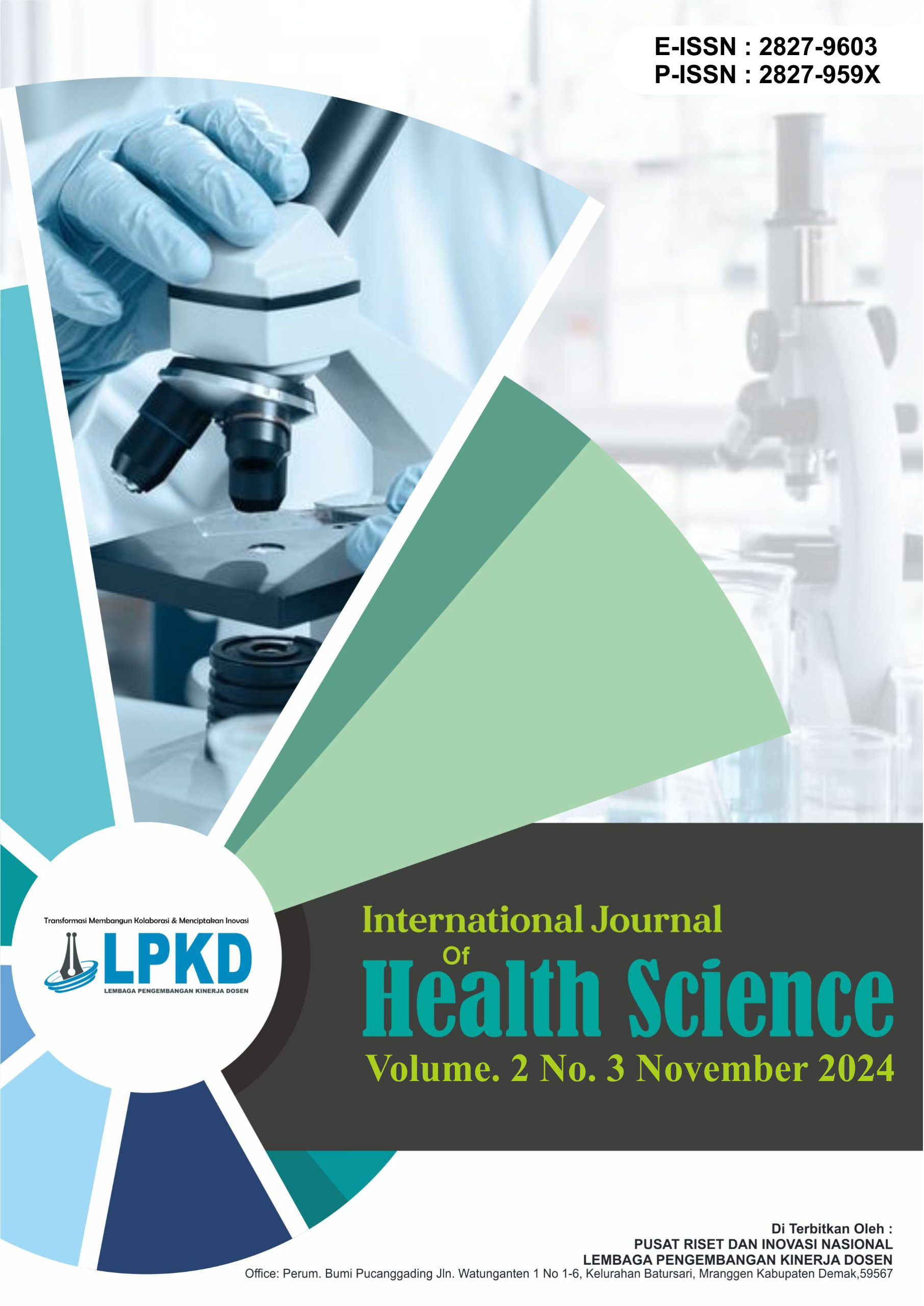MEANING CONSTRUCTION OF STUNTING IN PREGNANT AND BREASTFEEDING WOMEN IN SUKA MAJU VILLAGE TANJUNG TIRAM BATU BARA
DOI:
https://doi.org/10.55606/ijhs.v2i3.1001Keywords:
Stunting, Pregnant women, Breastfeeding womenAbstract
Stunting is a problem in child growth that is caused by malnutrition over a long period of time. Malnutrition can begin when the child is still in the womb. Stunting can cause a child's body to become stunted or short, the child's intelligence is low, so that the child is susceptible to disease. The stunting prevalence rate in Indonesia was 27.67% in 2019, with a percentage of 30.38% coming from North Sumatra. The causes of stunting are a lack of nutritional support and the presence of infectious diseases in children. In addition, knowledge of nutrition and knowledge of stunting also has an indirect impact on stunting. The phenomenon seen in Suka Maju Village, Tanjung Tiram District is that pregnant women and breastfeeding mothers do not know stunting well, some of them have never even heard of the term stunting, and some others know that stunting is a malnourished child but do not understand what causes it and the impact of children suffering from stunting. With this knowledge, there are no preventive activities carried out by pregnant women and nursing mothers in Suka Maju Village, including the parenting style they apply. Parenting practices that do not support stunting prevention are pregnant women who do not consume highly nutritious foods, provide complementary foods that are not varied, and do not cultivate exclusive breastfeeding.
Downloads
References
Batu Bara Regent (2021). PERBUB Concerning Integrated Stunting Reduction Convergence in Batu Bara District, Country Copy: Lima Puluh.
Denny Moeryadi (2009). Phenomenological Thought according to Edmund Husserl. Publish by jurnalstudi.blogspot.
Halimatusyadiah (2020). Factors related to stunting in children aged 24-59 months at the Curug Health Center, Serang City, Banten Province, 2019. Pomegranate health scientific journal, 4(1), 1–8.
Mitra (2015). Short Child Problems (Stunting) and Interventions to Prevent Stunting. Journal of Community Health, Vol. 2, No. 6, May 2015, Pekanbaru.
Mulyana, Deddy (2001). Qualitative Research Methodology, New Paradigm of Communication Science and Other Social Sciences. Bandung: Remaja Rosdakarya.
Neuman, W.L (2015). Social Research Methodology: Quantitative Qualitative Approach. Jakarta: PT. Indeks.
Rogers, Everett M., D. Lawrence Kincaid (1981). Communication Networks: Toward a New Paradigm for Research. Newyork
Sari, Neng Kulsum Sari (2019). Description of Mother's Knowledge about Nutrition for Pregnant Women to Prevent Stunting in Children in Narawita Village. Cicalengka District. Bandung Regency. Laporan Tugas Akhir: Universitas Bhakti Kencana, Bandung.
Teja, Mohammad (2019). Indonesian Toddler Stunting and Its Management. Brief Info Journal Vol XI, No.22/II/Puslit/November/2019, Jakarta Pusat.
WHO (2013). World Health Day 2013: Measure Your Blood Pressure, Reduce Your Risk. http://www.who.int.
WHO (2010). Nutrition Landscape Information System (NLIS) Country Profile Indicators. Interpretation Guide. editor. Switzerland: WHO Press.
Downloads
Published
How to Cite
Issue
Section
License
Copyright (c) 2022 International Journal Of Health Science

This work is licensed under a Creative Commons Attribution-ShareAlike 4.0 International License.







